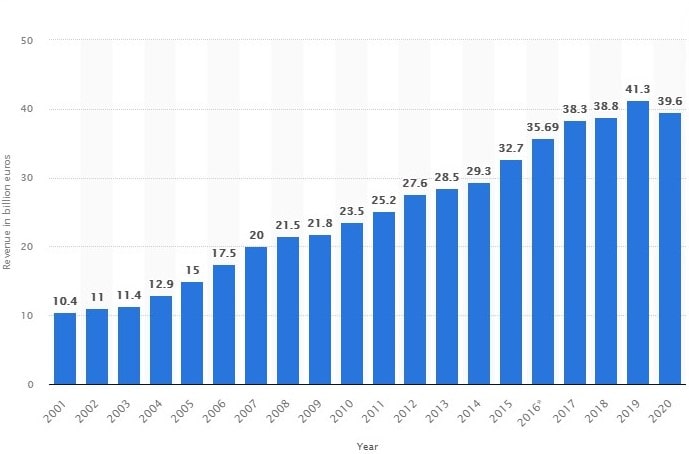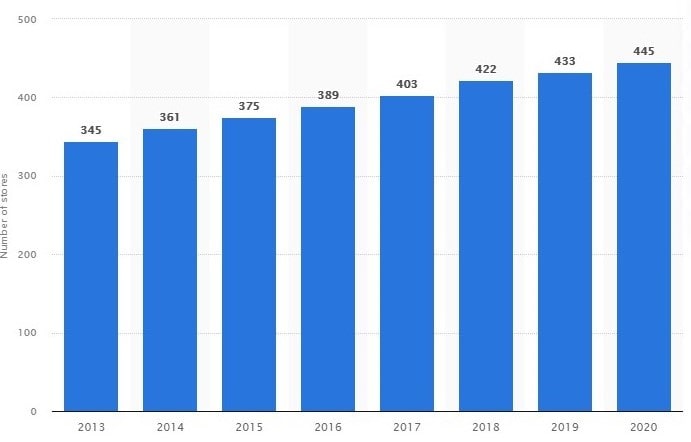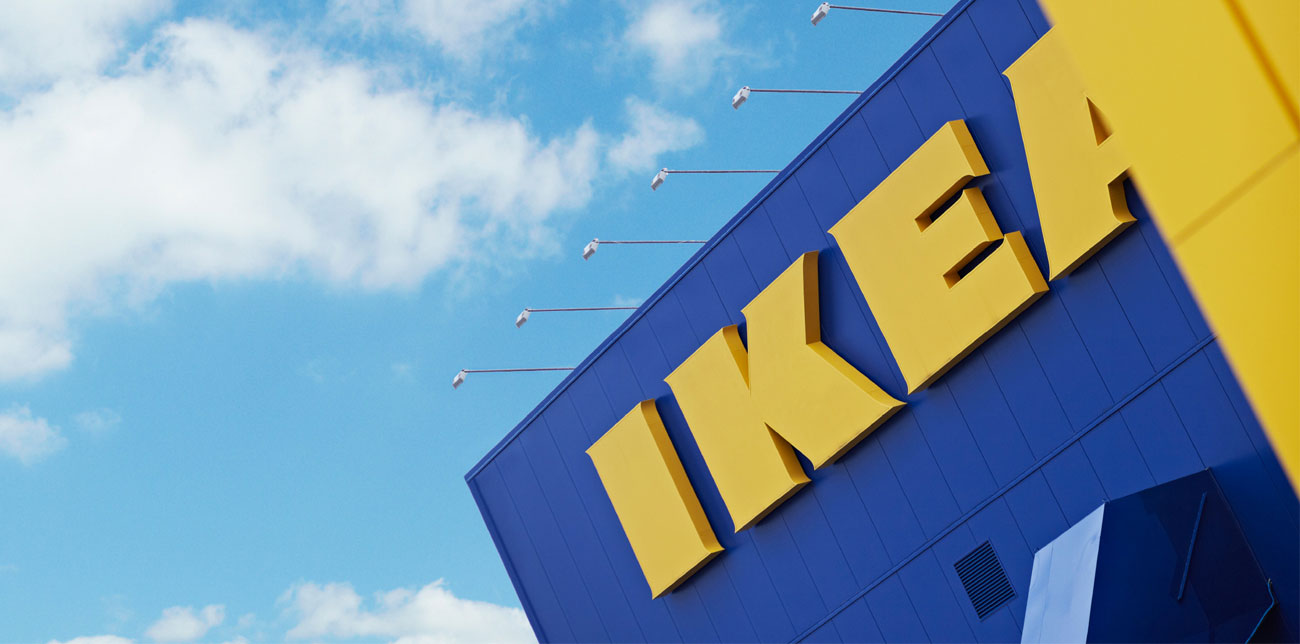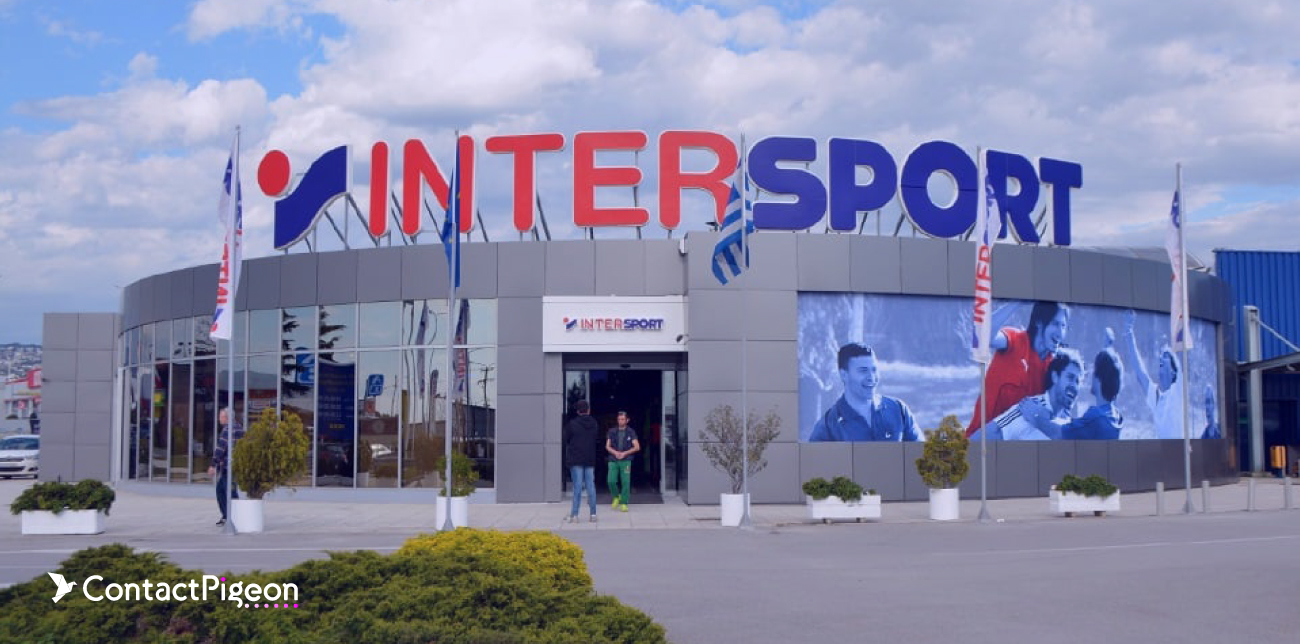We have already talked about the value of case studies before, but we cannot stress enough how our readers can benefit from complete and detailed case studies. At ContactPigeon, we love writing about all-things-retail, and case studies about retail giants is our cup of tea. Therefore, this time we will extensively inspect IKEA, a conglomerate mostly known for its ready-to-assemble furniture, kitchen appliances, and home accessories. The IKEA omnichannel strategy is an exemplary model that made the brand the leading furniture retailer in Europe and one of the most valuable retail brands in 2021 worldwide.
As you can imagine, we have a lot to learn from IKEA’s founder; Ingvar Kamprad started the company in 1943 and strategically transformed it later into the empire that it is today. eCommerce and retail professionals can get inspired and learn valuable tools from a brand with a 78-year course and 456 stores around the world.
Table of Contents
- > IKEA’s history
- > The awards IKEA has won up until now
- > The key success factors that drive the IKEA omnichannel strategy
- > 4 examples when IKEA’s omnichannel strategy skyrocketed customer experience
- > IKEA’s eCommerce website
- > Interesting eCommerce technology and tools IKEA uses
- > Retail technology that IKEA is missing
- > Impressive IKEA stats you shouldn’t miss
- > Omnichannel leads you to the top.
IKEA’s history
IKEA is an acronym standing for the founder’s initials, Ingvar Kamprad, the name of the farm he grew up in, Elmtaryd, and the nearby village, Agunnaryd. In 1943, Ingvar’s father rewarded him for doing well with his studies with a small amount of money. Ingvar, always the entrepreneurial spirit, used the money to set up the IKEA company at his uncle’s kitchen.
Later, in 1948 the founder of IKEA included furniture in its product range, establishing from the start the brand’s low-cost philosophy. In the ‘50s, because Ingvar’s success intimidated the competition, his rivals coerced local suppliers to exclude IKEA from their business dealings.
Always resourceful, IKEA’s mastermind decided to look for partnerships abroad and in 1953, despite all the obstacles, he managed to open the company’s first showroom in Älmhult. Additionally, in the same year, to save transportation costs and damage rates, Ingvar introduced the flat-pack, ready-to-assemble concept that, eventually, made IKEA so famous, and solidified its branding.
A decade later, Ingvar observed his customers’ habits and noticed that the IKEA stores were losing traffic during lunchtime. As a consequence, to avoid losing the customers’ attention and ability to purchase, he opened the first IKEA restaurant in 1960. Fast forward, in the ‘70s, IKEA has already expanded its physical presence in Norway, with more stores opening in Switzerland and Germany.
Lastly, in the early ‘80s, all this development called for a change in the company’s structure. With the aim of achieving a sustainable organization, Ingvar separates the ownership of the operations from the IKEA brand, thus introducing the franchise system.
The awards IKEA has won up until now
Before proceeding to the definitive aspects that form the IKEA omnichannel strategy, first things first. A retailer such as IKEA has gained enormous recognition and has been nominated on a global scale for various awards. After careful consideration, we have gathered the most important distinctions for its marketing campaigns, designs, and sustainability practices over the years.
- The “Unböring” campaign, Lamp – Grand Clio Award 2002
- The “Unböring” campaign, Lamp – London International Award 2002
- The “Unböring” campaign, Lamp – ANDY Awards 2002
- Grand Prix for the The “Unböring” campaign, Lamp – Cannes Lions International Festival of Creativity 2002
- Product award for the Hallarum Kitchen – EDIDA 2014
- Thank You Award – World Childhood Foundation 2015
- Innovative and Cutting-edge Designs Awards to four IKEA collections – Good Design 2018
- Circular Economy Award – World Economic Forum 2018
- CSR Engagement/Marketing Campaign of the Year – Edie Sustainability Leaders Awards 2019
- Product design awards to nine IKEA collections – Red Dot 2019
- Gold Award for Best Performance in Home, Furniture, and DIY – PEAK Awards 2019
- Gold Award for Best Digital Multi-Channel Campaign – PEAK Awards 2019
- Silver Award for Best Video Campaign – PEAK Awards 2019
- Silver Award for Best Display Campaign – PEAK Awards 2019
- Silver Award for Best Paid Search Campaign – PEAK Awards 2019
- Gold Award for Best of YouTube / Innovation – Social Media Awards 2019
- Gold Award for Best of Facebook Family of Apps / Communication – Social Media Awards 2019
- Silver Award for Best of Facebook Family of Apps / Innovation – Social Media Awards 2019
- Gold Award for the IKEA Love Story campaign – PEAK Performance Marketing Awards 2020
- Platinum Award for Best In Retail / eCommerce for the best Facebook and Facebook family of Apps communication campaign – Social Media Awards 2020
- Platinum Award for Best In Retail / eCommerce for the best YouTube communication campaign – Social Media Awards 2020
- Gold Award for Best Use of YouTube for Action Campaigns – Social Media Awards 2020
- Gold Award for Best Dynamic Facebook Ads – Social Media Awards 2020
- Silver Award for Best Real-Time Activation for COVID-19 – Social Media Awards 2020
- Best Instore Solution – Reta Awards 2020
- Employer Recognition Award – MOSAIC Awards Ceremony 2020
- eTailer of the Year – e-Bizz & Social Media Awards 2020
- eShop of the Year – E-volution Awards 2020
- Platinum Award for Customer Service and Operations – E-volution Awards 2020
- Gold Award for Home, Furniture, and DIY – E-volution Awards 2020
- Gold Award for eBusiness Innovation – E-volution Awards 2020
- Gold Award for Redesign – Relaunch (Website) – E-volution Awards 2020
- Gold Award for Customer Support – E-volution Awards 2020
- Gold Award for Omnichannel Experience – E-volution Awards 2020
- Silver Award for eCommerce Innovation – E-volution Awards 2020
- Silver Award for Mobile Commerce – E-volution Awards 2020
- Silver Award for Information Architecture – E-volution Awards 2020
- Corporate Award in Collaborating with Social Entrepreneurs – Catalyst 2030 Award, March 2021
- Gold Award in the Retail Stores category – Retail Business Awards 2021
- Silver Award in the eRetailers category – Retail Business Awards 2021
The key success factors that drive the IKEA omnichannel strategy
IKEA’s vision is “to create a better everyday life for the many people” and this message has been embodied in the brand’s strategy since its conception. This section is dedicated to the inspiring IKEA omnichannel strategy and the key axes that contributed to its stunning growth.
Democratic design approach
IKEA is the greatest furniture vendor around the world and the second-largest in the US, and these facts were the result of the brand’s holistic approach. The Democratic Design refers to the five dimensions that IKEA takes into account when they design a new product, evaluating the process of their product range.
These five elements are based on function, form, quality, sustainability, and affordability. The form reflects the minimalistic aesthetics of each furniture piece, while the quality is their durability and resistance through time. The minimalist architecture is both a statement and a very resourceful way to easier manufacture. Easier forms require less time to be produced, and less time to assemble, resulting in efficiency and lower labor costs.
With regards to functionality and sustainability, IKEA’s strategy focuses on using mindfully the available resources to create proper goods for their clients. IKEA is famous for its sustainability practices and its recyclable products from particleboard (recycled wood chips blended together).
DIY mentality
Affordability is the fifth pillar of IKEA’s positioning and requires a section on its own. Ingvar desired a franchise that would make life easier both for the company and for the consumers. The aforementioned qualities that encompass the company’s production line would be meaningless if transportation and installation costs were sky-high.
Every element is carefully selected and the flat-pack delivery/self-service method is the final piece of the puzzle. The distribution system reduces both the manufacturing process and the damage costs, increasing productivity and trading at a massive scale.
Demographic targeting and (literal) shelf life
IKEA had an incredible insightfulness to its target audience, without even realizing it. Older generations stumbled upon an endless headache when buying home supplies because they wished for furniture that would last a lifetime. IKEA’s biggest asset and offer to the fundamentals of the retail industry is the ephemeral; a mentality we observe in the younger generations, starting from the Millenials and thereafter.
This philosophy was embraced by a younger demographic that wasn’t interested anymore in lifetime investments; by making an archaic tradition moot, the brand relieves a huge amount of stress from the buyers. With quality and affordability but not meant to last forever, the IKEA brand supplies its clients with easy-to-use furniture that, ultimately, is even easier to dispose of and be replaced. As a result, this trend influenced the majority of the retail big leagues, forced conventional furniture businessmen to realign their interests and recreate this model, albeit unsuccessfully.
People and Planet Positive
The Swedish giant has dedicated its life’s work to make the world a better place within the planet’s boundaries. The People and Planet Positive strategy is the conglomerate’s agenda summarizing the ways in which they are already making a difference and stating their future plans.
This IKEA strategy abides by the UN Sustainable Development Goals, is updated annually, and is infused in the entirety of the brand’s value chain. This agenda is divided into three sections, one more significant than the other; healthy & sustainable living, circular & climate positive, and fair & equal.
The ratification of the Paris Climate Agreement was an important step towards the company’s attempt at a global coordinating action. So far the enterprise is already working with recyclable materials, provides solutions to water and energy efficiency, and gradually eliminates harmful chemicals or virgin fossil plastic. IKEA’s social impact relies on the support of children’s rights, gender equality, social entrepreneurship, and inclusiveness.
Unparalleled shopping experience
IKEA has mastered the art of destination marketing, redefining the customer experience and paving the way even in the post-COVID-19 era. Before social distancing and gathering restrictions became the new norm, the company’s physical presence altered the customer journey in more ways than one.
In-store amenities, such as children’s playrooms and the well-known IKEA restaurants serving Swedish delicious food, have played a very significant part in the company’s growth, recognition, and longevity. Last, but not least, we couldn’t omit the indoor structure of their stores, with its “showroom” architecture. This arrangement allows for proper product demonstration, fortifying the visitor’s shopping experience.
4 examples when IKEA’s omnichannel strategy skyrocketed customer experience

We have already highlighted how the pandemic expedited the already existing inclination towards the omnichannel experience. Making the implementation of a strong eCommerce strategy mandatory, many organizations changed their methods, IKEA included.
Example #1: Physical and eCommerce Integration
Ever so cautious, the company was very careful when they decided to actually expand their digital presence. Slow and steady wins the race, with IKEA firstly broadening its online product range, and then proceeding to the creation of high feature mobile applications, and digital catalogs.
Example #2: The Store Visits metric as IKEA’s main offline measurement solution
Store Visits is the epitome of the IKEA omnichannel strategy, measuring the impact online ad clicks have on their stores’ physicality. With the application of brick-and-mortar conversion rates and average basket values, the retailer estimates how their store visits are shaped by the use of mobile ads. This is one of the tactics that make IKEA’s strategy an exceptional omnichannel marketing example.
Example #3: Buy online and pick up in-store model
IKEA’s Click & Collect service was available long before the unfortunate COVID-19 pandemic began, but was briefly paused, due to global government restrictions for non-essential retailers. Luckily, collective inoculation will eventually allow consumers to resume their pre-crisis everyday activities, slowly but surely notwithstanding.
On that note, the brand’s service is working like clockwork, with an entire ecosystem to support it. Clients place their order online, choose their preferred pick-up location and the company’s Customer Service department informs them accordingly when their purchase is ready for collection.
Some skeptics would say that this is not such a groundbreaking feature, though the brand begs to differ. IKEA’s physical presence is an exemplary location with specially designed spaces for the Click & Collect service and explicit signage. Of course, the company’s ready-to-assemble/flat-pack model is what makes this procedure easy and acknowledged by peers and customers alike.
Example #4: IKEA’s innovative apps and the AR application that changed the digital furniture retail
The Scandinavian giant knows how to create original mobile apps and it shows. Apart from the Click & Collect feature, the furniture retailer is determined to erase the gap between the offline and the online with many retail innovation methods.
IKEA’s mobile app, promoted as The Smallest IKEA Store, was designed to elevate the customers’ journey and form a seamless experience by providing a very useful functionality. According to stock levels and estimated deliveries inventory, the app offers incredible insights on item availability with a detailed index. This important piece of information offers customers the ability to estimate each product’s stock availability, organize their purchases, and always stay updated on shortages.
Additionally, the app creates wish and shopping lists and collects points for the IKEA loyalty program. The shopping list can be used either on the website or in-store, includes prices for non-subscribers or loyal members, and guides visitors where they need to go to acquire their items.
In total, IKEA lists three incredibly interesting and useful applications on its official website. The first was mentioned above while the second is based on IKEA’s sustainable philosophy, and it is named the IKEA Better Living App. The application offers green advice on everyday habits, logs the user’s behavior, and incentivizes the clients with a point-based reward system.
For those of us that love to shop online, measuring dimensions and imagining an appliance or a piece of furniture in our home space has always been a nightmare. IKEA saved us the trouble and conceived the revolutionary AR application, the famous IKEA Place. Using the magnificent properties of augmented reality, customers now have a definitive view of the products they desire before ordering them online.
All of us have wondered at some point if this chair will fit in our kitchen, or if we will even like it once we see it up close. The AR offers consumers a much-needed and much-appreciated complete visual of the IKEA catalog so that they can proceed with their order easier and with more confidence.

IKEA’s eCommerce website
As in all our case studies, we’ve analyzed 4 pages as templates of the company’s website to identify eCommerce best practices and mistakes you should avoid.
A. Analyzing IKEA’s Home Page

What we liked:
- Short, but informative and comprehensive: Minimalism for IKEA is not just an aesthetic direction at this point, it is a state of mind. The home page enlists three major and explicit categories in the drop-down menu located in the upper left corner, and the middle is divided into two spaces. All in all, the user can find everything, from store locations to the renowned IKEA services, easily, in no time, and without scrolling forever.
- Sofia, the friendly AI: Just like Boots, IKEA trusted the AI technology creating a friendly AI virtual assistant named Sofia. The easy-to-use chatbot is an extra bonus to the existing easy-to-use interface.
- Sticky elements: An extremely useful feature including delivery tracking, login, the customers’ wishlist, and, of course, their shopping cart.
What we didn’t:
- No sign-up/entry pop-up: Sometimes users may find themselves irritated by the presence of pop-ups, but as a retailer or a CRM do not be alarmed. Surprisingly, pop-ups have an average conversion rate of 3.09%; that is why consumers are hesitant at first, but in the end, they can’t resist the urge to subscribe.
B. Analyzing IKEA’s Category Page

What we liked:
- Compare, quick-add-to-cart, and quick-view functions: A very successful element is the quick features, as they make the visitor experience smoother and a lot easier. As far as the “compare” possibility is concerned, now this is amazing. Customers can compare up to three different products and estimate what suits them best without opening multiple tabs or searching endlessly.
- Reward points: Each product includes the exact amount of points that the loyal members of the IKEA family will collect from their purchase. The company’s loyalty program offers different prices to its subscribers, making it all the more seductive.
- Out-of-stock notifications: Interesting feature that lets the customers know when a product is out-of-stock, it offers simultaneously the option for a notification when available.
- Recently seen section: The “recently seen” reminder is a nice way to increase AOV while keeping your customers engaged in your website a little longer.
What we didn’t:
- In need of more sticky elements on the menu: The presence of sticky elements is paramount due to its increase in mobile conversions. Besides the technical standpoint, it makes the interface more functional and cohesive.
C. Analyzing IKEA’s Product Page

What we liked:
- Credit card monthly installments: Customers always appreciate alternative payment options, and IKEA has made sure to present lenient options.
- Availability per store: Location, location, location. Convenience is the mother of revenue and website users wish to know the whereabouts of their favorite products.
- Relevant product recommendations: Divided into three categories: “similar products”, “other people also bought” and “especially for you”, the Swedish company invests in the boost of the average order value (AOV), personalization, and the need to create scarcity and demand.
- Detailed product description: The product page includes everything; from dimensions to product guarantees, and of course, the most important info of all: the PDF assembly instructions.
What we didn’t:
- Not enough visuals: Unfortunately, the IKEA product page does not have enough clear product photos. This can prove potentially harmful for the retailer and prevent potential buyers from completing their purchases.
D. Analyzing IKEA’s Checkout Process

What we liked:
- Delivery options and shipping charges: Apart from the Click & Collect service, visitors can place their postal code and schedule their online delivery. Both options are located in the Checkout menu and are really user-friendly. In the case of home delivery, the shipping costs are already included.
- Guest checkout: Always a favorite eCommerce best practice, the guest checkout alternative increases conversions and revenue. Approximately, 28% of the customers abandon their carts when asked to create an account.
- Bestselling recommendations: Another resourceful and frequent way to increase the AOV is product recommendations and the brand has done that incredibly well.
What we didn’t:
- No exit-intent pop-up: An exit-intent pop-up is always eye-catchy and informative. It is also a very well-known eCommerce best practice that increases conversions by ~1-2%.
Interesting eCommerce technology and tools IKEA uses
Using the buildwith tool we scanned the Swedish conglomerate’s website and we highlighted the most impressive technologies spotted.
- Microsoft Bot Framework: Sofia the AI was built with this framework. Great tool for constructing conversational virtual assistants.
- Google Conversion Tracking: Free tool that monitors and analyses customer behavior towards the website’s ads.
Some other interesting eCommerce tools that are worth mentioning, are the ones used by the top supermarket chains in the UK, like ASDA with the Omniture SiteCatalyst and Hotjar, Sainsbury’s with the Pay@Browse and Screwfix with the Content Square & Bazaarvoice.
Retail technology that IKEA is missing
Apart from the tools we did find on the company’s website, we could not omit the ones that were missing. The IKEA omnichannel strategy would significantly improve with the use of a powerful marketing automation solution.
- ContactPigeon: To fully nullify the distance between the offline and the online world, IKEA could include some of ContactPigeon’s unique key features. Integrating data from physical stores with online customer data and running omnichannel QR code campaigns would be a significant step in that direction.
Impressive IKEA stats you shouldn’t miss
To fully grasp the company’s reach in the global retail industry, we present you with some interesting statistics and facts about IKEA.

- As of 2021, the Swedish group is valued at $48.1 billion and has stores in 55 countries around the world.
- IKEA has 445 warehouses on a global scale.
- In 2020, more than 800 million people made their purchases from an IKEA store.
- IKEA has 52 warehouses in 27 states in the US.
- IKEA Canada operates 12 robots, 30 storage and retrieval systems, and a floor conveyor system that reaches 750 meters.
- Germany has 53 IKEA stores and in 1974opened its first warehouse in Munich.
Omnichannel leads you to the top
As you can imagine, the IKEA omnichannel strategy has been at the forefront from the beginning, even if Ingvar didn’t intend to at first. This success, undoubtedly, was the result of a consistent, carefully executed strategy across all channels, and customer touchpoints.
Although, even in major cases like IKEA, where every part works perfectly towards a common goal, constant optimization and restlessness are very important. Omnichannel technologies evolve day by day, therefore keeping up to date with the latest technologies is essential. Customer retention and customer lifetime value (CLV) are immediate results of brand loyalty, and brand loyalty is based on customer engagement.
ContantPigeon’s sophisticated platform is dedicated to building strong relationships between customers and the brands they love. Specifically designed for the retail sector, our company’s advanced automated features allow retailers and marketers to reach their audience through a wide range of channels. As one of the leading omnichannel marketing automation brands in Europe, we invite you to book a free consultation and explore in detail the benefits of a truly customizable platform.

Let’s Help You Scale Up
Spending time on Linkedin? Follow us and get notified of our thought-leadership content:



![Benchmarking Growth Strategies of Top Fashion Retailers [Study]](https://blog.contactpigeon.com/wp-content/uploads/2025/11/top-fashion-retailers.jpg)
